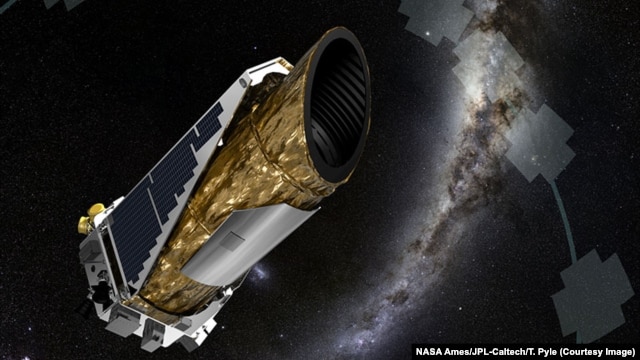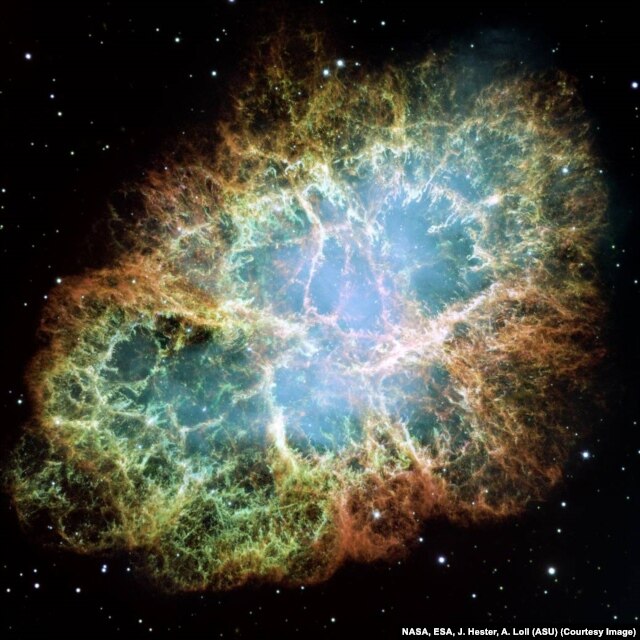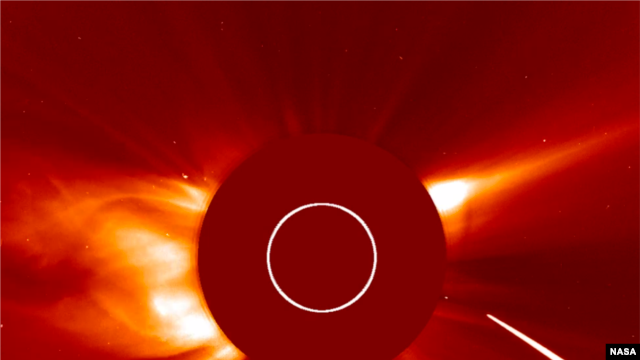That star sure is weird
The Kepler mission "is specifically designed to survey our region of the Milky Way galaxy to discover hundreds of Earth-size and smaller planets in or near the habitable zone and determine the fraction of the hundreds of billions of stars in our galaxy that might have such planets." It does it by measuring the light from far away stars, and noting as planets pass between the star and the Kepler photometer. So far, Kepler has discovered more than 2,700 stars that have planet candidates in their orbit, and it's just getting started. But while one group of scientists was digging through the Kepler data, they discovered an anomaly: Tabby's star — 1,480 light years away in the constellation Cygnus — was not behaving at all like a star its size and age, but instead, was dimmer than it should be and also periodically flickering. Those findings were published last October at the online site "arXiv" in an articled called "Planet Hunters X. KIC 8462852 – Where’s the flux?". The basic premise was: "We've noticed this happening, but we don't really have any idea why."
Tabby's star in Infrared and ultraviolet light
The team suggested a few of the most likely "whys" in that original paper. "We presented an extensive set of scenarios to explain the occurrence of the dips," they wrote, "most of which are unsuccessful in explaining the observations in their entirety. However, of the various considered, we find that the break-up of a exocomet provides the most compelling explanation." The article called for a lot more study and observation of Tabby's star so astronomers could unravel the mystery. Science scratched its head, said "that's a good idea" and agreed to take a closer look. That would have been that, except for the fact that we humans are what we are. Predictably, the web reacted in the same way as creationists trying to get intelligent design into public schools: "We don't know what it is" the web screamed, "IT MUST BE ALIENS!"
Whoa, Tex!
But none of the scientific studies so far mention the possibility of aliens, or extraterrestrial civilizations. But that hasn't stopped sites like Sky and Telescope, and SETI (Search for ExtraTerrestrial Intelligence) Institute from at least entertaining the idea that it was an artificial construct. It's fun to think about, but — buzz kill that science is — the answer to this puzzle isn't likely to be a Dyson sphere. Unfortunately, knowing what it isn't doesn't do us much good and, since the original article, there has been just a trickle of research about KIC 8462852. The most important advance on the story came out in November and threw big shade at the exocomet theory.
Okay, that star is REALLY weird
Last week, a new paper on Tabby's star came out and a new set of astronomers found new weirdness and came to the unsettling conclusion that "No known or proposed stellar phenomena can fully explain all aspects of the observed light curve."
Say what?




